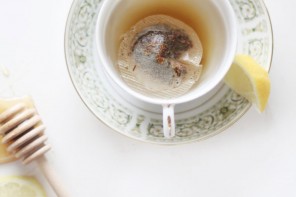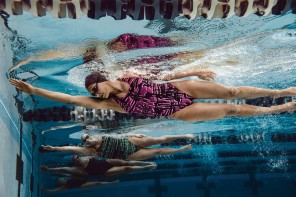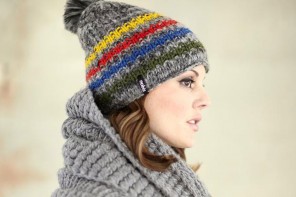Eco fashion isn’t a new phenomenon. Clothes are one of the ways that people express themselves and many responsible citizens pride themselves in wearing their values on their sleeves by purchasing environmentally-friendly clothes.
What is now a topic of “environmental sustainability” used to revolve around the public’s outcry against sweatshop labour, fair trade and a need for locally-produced clothing. But this form of activism has taken on different forms and trends throughout the 60s through to the 90s, and each era has influenced today’s green fashion industry.
Last year, the Museum at FIT (a specialised fashion museum in New York City) hosted an exhibition entitled Eco-Fashion: Going Green in order to explore fashion’s relationship with the environment.
“Although eco-fashion is one of contemporary fashion’s most compelling practices, fashion and the environment have had a longstanding, multifaceted, and complex connection that is rarely explored,” said Cheri Fein, executive director of public relations at the Museum.
The oldest garment on display at the exhibition was a silk brocade gown that dates back to the 1760s. In the 18th century, silk was woven on hand looms (making it a painstaking and exceptionally time-consuming task for seamstresses and artisans). These pieces were cherished by their owners due to their beauty and quality.
When did recycling come in?
Bulk clothing manufacturing and “fast-fashion” is a relatively new concept. Past generations had to rely on hand-me-down items and innovative mending in order to recreate items for parties and special occasions. While few women would be able to (confidently) whip up an ensemble themselves today, our grandparents knew how to make do and mend.
Most eco-designers and fashionista’s will agree that re-using and recycling textiles is one of the most common ways to reduce our impact on the planet. Throughout history, the concept of recycling has taken on a quite a few forms.
The Museum at FIT showcased a dress that was made in the early 18th century with silk from the 17th century, proving that hand-woven silk retained its value and use for their owners throughout the years.
To show how recycling and re-using textiles had continued to change throughout history, the Museum showcased a Martin Margiela jacket that was produced in the 1990s using a number of silk scarves, along with a Xuly -Bët dress that incorporates worn pantyhose and sweaters.
The beginning of ‘natural clothing’
Consumers started to become concerned about the chemicals (particularly flammable chemicals) in clothing around the 1980s. Many of these fears were directed at clothing made from cotton, due to the pesticides that were used during the growing phase. In order to reassure consumers, ‘natural‘ and ‘chemical-free’ labels started to appear on clothing items. C&A, a world leading organic cotton supplier, started selling organic cotton ranges in the early 1990s. In 2010 alone, the company managed to sell 23 million items of organic cotton clothing.
Although the beginning of natural cotton and fabric sprouted from consumer’s fears of wearing highly flammable materials, this quickly morphed into a deeper realisation of the raw deals that manufacturers, farmers and labourers in developing countries were getting for their part of the production.
“Ethical clothing” started as an anti-globalisation movement
Levi Strauss & Company’s use of prison labour in China to make jeans was exposed by the Washington Post in 1992, placing more emphasis on fair trade within the clothing industry. After the Levi’s scandal, a string of other leading fashion brands (that “invested in overseas production”) were implicated, showing consumers and activist exactly what the price of ‘quick fashion’ was.
A few years later, Canadian author Naomi Klein published No Logo, an influential book that told the truth behind many of the large fashion labels around the world. The book, which became an international best-seller, along with the bad publicity that the big fashion labels received, essentially set the stage for ethical fashion.
What began as a concern for human rights and health is now a billion dollar, thriving industry. With ethical fashion being showcased at international fashion shows and new designers popping up on a daily basis, eco fashionista’s have a myriad of options and choices for organic and environmentally-friendly fashions.
The liveeco team







